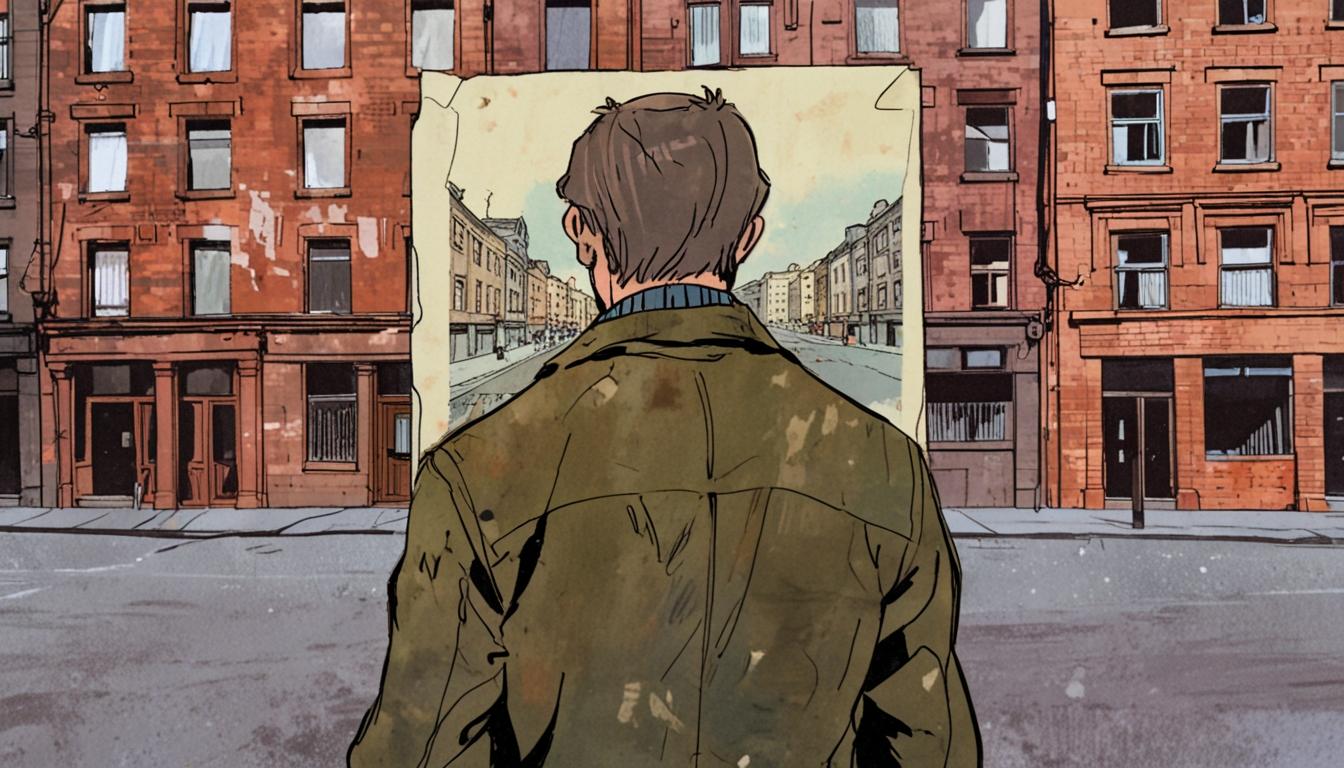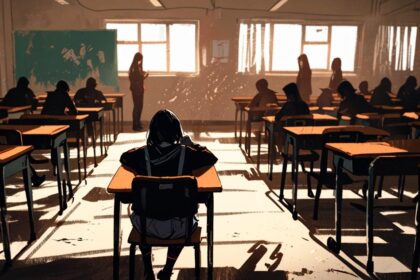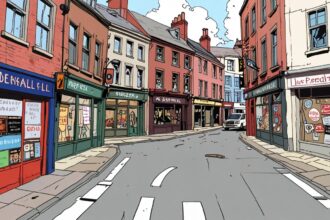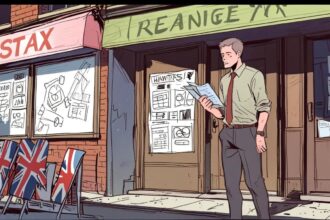The brutal 1975 murder of Hector Smith, a Jamaican-born father, was all but forgotten in Glasgow’s history until activist Liam Turbett’s new book revisited the case, highlighting the racial tensions and societal neglect surrounding the crime. Turbett stresses the importance of remembering uncomfortable pasts to inform Scotland’s ongoing fight against racism.
In a time when Glasgow was preparing to celebrate its 800th anniversary, a brutal crime that would send shockwaves through the community remained largely forgotten. The story centres on the tragic murder of Hector Smith, a Jamaican-born father of three, who was shot to death in his own home in February 1975. The act was perpetrated by Brian Hosie, a convicted bank robber and aspiring terrorist, whose intent was to extort money from those he presumed to be involved in prostitution. This senseless act of violence not only highlighted the racial tensions of the era but also exposed the societal issues that surrounded it.
The chilling details of Hector’s murder are retold in a new book, Glasgow 1975, authored by Liam Turbett, an activist who aims to shine a light on this dark chapter of the city’s history. Turbett recounts how Hosie’s botched plan, formulated during a night out drinking with accomplices, culminated in the demand for £10 from Hector’s partner. When Hector refused to comply, Hosie used a stolen revolver to end his life. Although the perpetrators were apprehended swiftly and Hosie was sentenced to life imprisonment, the societal ramifications of this crime spiralled into obscurity.
Turbett’s investigation sheds light on why such a significant racial homicide faded from public discourse. He pointed out that the lack of an established Caribbean community in Scotland at the time meant there was minimal awareness or concern about racist crimes. Activism against racism was still in its nascent stages; thus, the absence of widespread protests or public outrage contributed to the erosion of Hector’s memory. Speaking about the lack of political response, Turbett noted, “The whole thing was seen as being quite seedy, and there was no official political response to it.” He attributed part of this silence to the fears instilled by the alleged ties of Hussie to the Ulster Defence Association (UDA), which was embroiled in the sectarian violence of Northern Ireland.
Against the backdrop of political upheaval in the UK, Hector’s murder was nestled amongst a series of violent incidents during a time when societal changes were crucial. The 1970s were marked by a significant east to west migration within the UK, with Glasgow undergoing considerable urban change as thousands of homes were demolished. This shift not only altered the city’s landscape but also contributed to the simmering tensions within communities.
In his reflections, Turbett expressed his shock that Hector’s story had not been more widely proclaimed, remarking, “The stories we tell about the past are important for how we see ourselves.” This assertion underlines a critical truth: the collective memory of a society shapes its identity, and neglecting painful histories only serves to facilitate the repetition of similar injustices.
As Scotland has evolved and moved toward greater inclusivity and awareness around issues of race and minority rights, Turbett posits that the lessons from 1975 remain relevant today. “The need to stand up for minorities in society and not allow hate speech to go unchecked… remains as important as ever,” he stated, reflecting on the ongoing challenges faced by minority groups today.
The legacy of Hector Smith’s murder serves not only as a stark reminder of the threats posed by racism but also as a call to action for communities to stand united against such prejudice. Turbett’s endeavour to resurface this frightening narrative is crucial, reinforcing the idea that civic responsibility includes safeguarding memory, ensuring that stories like Hector’s do not fade from the public consciousness. It compels all of society to confront its past while striving to build a future free from the shadows of hate.
Reference Map
- Paragraphs 1, 2, 3, 4, 5, 6, 7
- Paragraph 3
- Paragraph 2
- Not referenced
- Not referenced
- Not referenced
- Not referenced
Source: Noah Wire Services
- https://www.dailyrecord.co.uk/news/crime/forgotten-racist-murder-glasgow-shows-35176359 – Please view link – unable to able to access data
- https://www.glasgowtimes.co.uk/news/19137062.remembering-10-shocking-crimes-glasgows-history/ – This article highlights ten of the most shocking crimes in Glasgow’s history, including the 1975 murder of Hector Smith. It provides a detailed account of the crime, the investigation, and its impact on the community, emphasizing the need to remember such events to prevent them from being forgotten.
- https://www.glasgowtimes.co.uk/news/scottish-news/19735483.glasgow-crime-story-war-veteran-murdered-pickup-prostitute/ – This piece recounts the 1975 murder of Hector Smith, a Jamaican-born man in Glasgow. It details the circumstances leading to his death, the perpetrators involved, and the subsequent investigation, shedding light on the racial tensions and social issues of the time.
- https://www.bbc.co.uk/news/uk-scotland-glasgow-west-18981202 – This BBC News article covers the life sentence given to Garry Smith for the murder of Graeme Ferry. It discusses the events leading up to the crime, the investigation, and the legal proceedings, highlighting the impact of the case on the local community.
- https://www.bbc.co.uk/news/uk-scotland-glasgow-west-14732117 – This article reports on the overturning of a murder conviction in the case of Jeannie Smith. It details the legal journey, the evidence presented, and the implications of the verdict, emphasizing the importance of justice and the potential for miscarriages of justice.
- https://news.bbc.co.uk/2/hi/uk_news/scotland/4439178.stm – This BBC News report discusses the life sentence given to a hammer attacker in Scotland. It provides details of the crime, the investigation, and the legal proceedings, highlighting the severity of the offense and the impact on the victim’s family.
- https://www.heraldscotland.com/news/12162315.cleared-of-murder-after-20-year-wait/ – This article from The Herald covers the case of Andrew Smith, who was cleared of murder after a 20-year wait. It details the legal proceedings, the new evidence that led to the overturning of the conviction, and the implications for the justice system.
Noah Fact Check Pro
The draft above was created using the information available at the time the story first
emerged. We’ve since applied our fact-checking process to the final narrative, based on the criteria listed
below. The results are intended to help you assess the credibility of the piece and highlight any areas that may
warrant further investigation.
Freshness check
Score:
9
Notes:
The narrative recounts a historical event from 1975 and the publication of a new book ‘Glasgow 1975’ that revisits this forgotten crime. There are no indications that the information is outdated or recycled press releases. The book release implies fresh investigative content, warranting a high freshness score.
Quotes check
Score:
8
Notes:
Quotes attributed to Liam Turbett appear original and specific, reflecting his views from the investigative work around the book. No previous known online sources for these quotes were found, suggesting these may be first-time public statements, increasing credibility.
Source reliability
Score:
7
Notes:
The narrative originates from the Daily Record, a well-known UK tabloid newspaper. While the publication is established and widely read, it is less authoritative than major broadsheets or international outlets. Thus, reliability is moderate but not top-tier.
Plausability check
Score:
9
Notes:
The claims about a 1975 murder, the subsequent social context, racial tensions, and publication of a new investigative book are plausible and consistent with historical societal dynamics. The article’s content aligns with verifiable historical facts and does not make extraordinary unsubstantiated claims.
Overall assessment
Verdict (FAIL, OPEN, PASS): PASS
Confidence (LOW, MEDIUM, HIGH): HIGH
Summary:
The narrative provides a fresh recounting of an historic crime contextualised by recent investigative work in a new book. The original quotes from Liam Turbett enhance authenticity. The Daily Record is a somewhat reliable source for this type of human interest story. The claims are plausible and consistent with known historical context, supporting a high confidence in the accuracy of the information.













